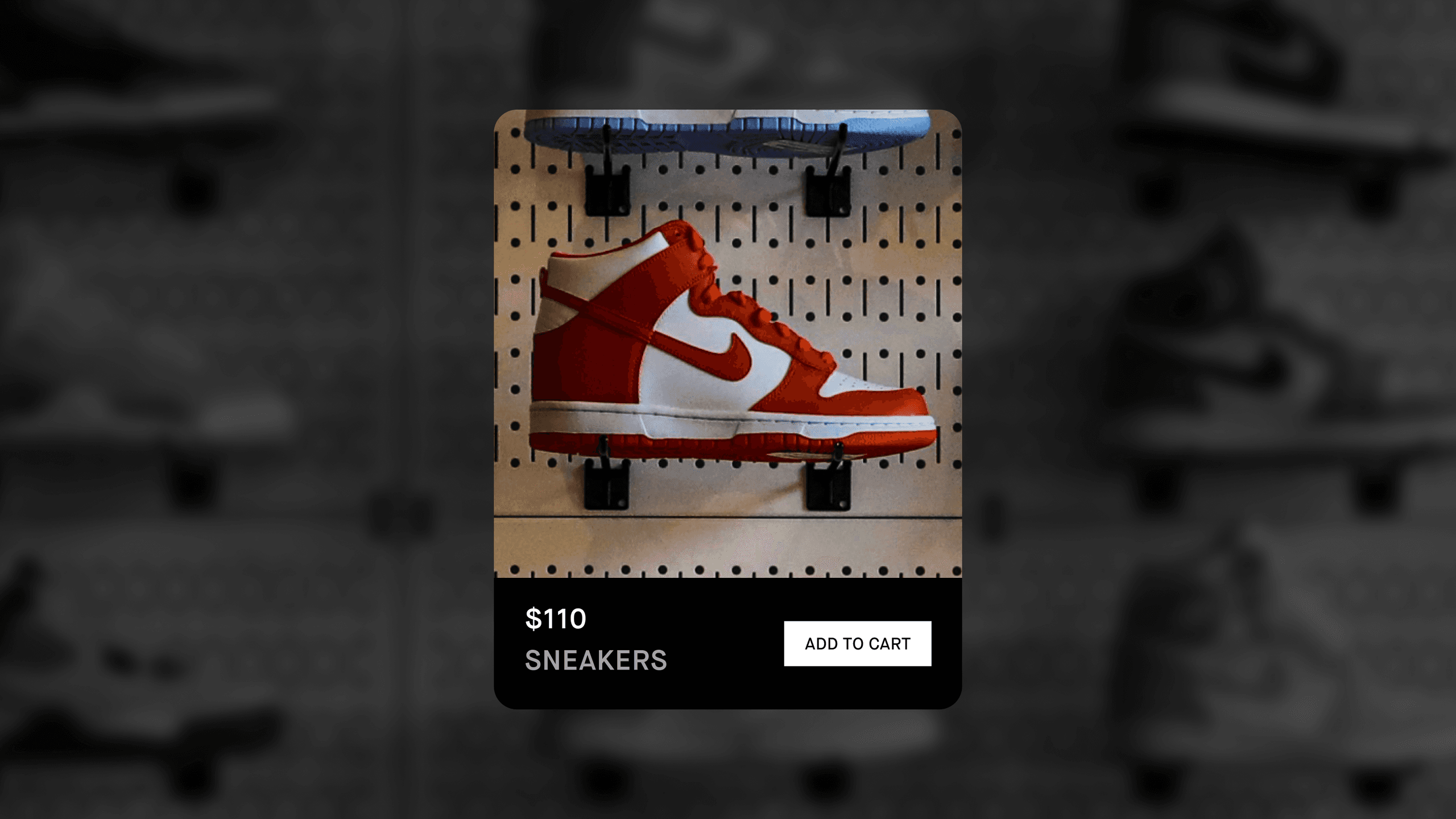It’s fairly obvious why these solutions exist — to ensure accessibility for all.
This is no different in the digital world. It’s important to us. It’s important to you, our clients, and it’s important to your users.
Digital accessibility is the practice of making products usable by as many people as possible. You might also think of accessibility as treating everyone the same and giving them equal opportunities, no matter their abilities or circumstances.
Just as it is wrong to exclude someone from a physical building because they are in a wheelchair, it is also not right to exclude someone from a website or mobile app because they are visually or otherwise impaired.
THE NUMBER OF DISABLED PEOPLE IS ON THE RISE
Accessibility needs can be associated with external circumstances as well as physical disabilities. The latter is gradually becoming an even more prevailing challenge due to the continuing trend of an aging population.
Physical disabilities can be divided into inherent, permanent and temporary. The temporary ones can arise as a consequence of an accident, for example. However, more prominent are permanent disabilities – which come with age.
A higher life expectancy means a higher number of elderly people dealing with impairments and disabilities. In 2020, there were about 727 million people aged 65 years or over, which is projected to go up to 1.5 billion by 2050.
But it’s not just the elderly. According to the WHO, 15% of the world’s population suffers from some kind of disability. There are about 2.2 billion people with visual impairments. By 2050, nearly 2.5 billion people are projected to suffer from hearing impairment or loss. All of this has a significant impact on the global economy (due to the cost of treatment, cost of reduced productivity, etc.).
HOW CAN DIGITAL ACCESSIBILITY HELP?
It is within our power to ensure no user segment is excluded.
Accessibility measures taken by designers and engineers can dramatically alleviate many difficulties that disabled individuals face when using a website or mobile app.
Examples of physical disabilities accessibility can help with:
- Cognitive impairment - issues with remembering, learning new things, concentrating or making decisions, memory loss, Alzheimer’s disease, dementia
- Visual impairment - blindness, short-sightedness, distance vision impairment
- Hearing impairment - partial or full loss of hearing
- Motor or dexterity impairment - arthritis, lost or damaged limb, Parkinson’s disease
- Learning disabilities - dyscalculia, dyslexia, dysgraphia
Examples of external disabilities accessibility can help with:
- Locations with limited/poor network connectivity (i.e., third world countries, underground workplace)
- Loud working conditions such as airports or building sites
- Illiteracy or limited access to education
- Situations where the user is unable to fully focus (i.e., truck drivers en route)
THE BENEFITS ARE ABUNDANT & PROVEN
Digital inclusion has been a thoroughly discussed topic; companies are now racing to meet the standards, trailing behind the industry leaders that already have.
In some industries, digital accessibility is even a legal requirement, namely in the government or financial sector — think personal identification, online payments, internet banking. If these products are not accessible, people with disabilities run the risk of leaking their sensitive data.
The COVID-19 pandemic has also highlighted the impact of digitization. The accelerated roll-out of digital products has enabled better collaboration, communication and social inclusion, helping to sustain daily lives and support business continuity. The easier the product was to use, the faster and more widespread was its adoption.
Accessibility has a direct impact on customer satisfaction, product adoption and the entire business brand (i.e., larger customer base and corporate social responsibility). Furthermore, upfront mitigation of some of the challenges will reap financial benefits in the future. As users become more independent and self-serving, the need for customer support will reduce — and today’s proactive decisions will reduce the need for costly retrospective changes and adaptations in the future.
And finally, in many cases, users without any disability have been known to prefer accessible products. For example, automatic doors, autocomplete typing, voice assistant and a lot more.
WHAT DO WE DO AT STRV?
We are committed to building WCAG 2.0 compliant products and applying the same level of standard for mobile applications.
At every stage of the process, we ensure we’re taking accessibility into consideration. It’s baked into the cake’s foundation, so to speak, not just the cherry on top.
For more insight, here is our approach per project phase (Design, Engineering & QA, Post-launch Care).
DESIGN
At the very beginning, traditionally during the Discovery Phase, designers work together with the Product Manager to assess the target user base. They evaluate common trends and patterns and build user personas. This is done via an industry comparison, which also looks at how accessibility is addressed among peers — to answer questions like, Could you become an industry leader by building an accessible product?.
Then comes the Design Phase, when the tone is set as the product starts taking shape.
Our designers work with accessibility standards as they’re creating wireframes, coming up with the design concept and building the user experience and user interactions — which also includes looking at things like fonts, contrast and content. Designs also go through thorough usability testing before going into the next phase.
ENGINEERING & QA
This is when things really come to life. There is a range of technical aspects that need to be taken into consideration when developing. A few examples:
- Accessible design - with dynamic font sizes and appropriate contrast, spacing and content, to ensure all users have the same experience
- Localization - plan for different language requirements should the product scale internationally
- Local persistence - accounting for offline mode
- Responsive layout - making sure our apps and websites work for all screen sizes and supported devices (like tablets) in both portrait and landscape mode
- Compatibility with navigation tools - users with visual impairment often rely on VoiceOver or TalkBack for assistance
As our engineers review the designs during the Engineering Phase, the client is consulted on a range of details relevant to the product. Our QA experts are also there to catch missing details or hidden bugs to ensure everything runs smoothly for any user.
POST-LAUNCH CARE & CONTINUOUS IMPROVEMENT
Things don’t just end after the release. The product must be continuously monitored from all perspectives, including accessibility.
We provide support with setting up the right success metrics to determine how a product is performing and whether its digital accessibility is in need of any updates. Through an in-depth data analysis, we are able to draw insights and assess user behavior. Should there be an opportunity for an improvement, we’ll spot it.
IN SHORT: IT’S THE RIGHT THING TO DO
Not every product is for everyone. But whatever the target audience, all user groups include individuals with a disability. Business owners should always keep that in mind and make decisions accordingly — especially now, with the evolving global demographic.
At STRV, we’re convinced it’s all about the mindset. Do we want to be inclusive and ahead of the competition? Do we want to truly create customer-centric products which can be used by anyone and everyone? And do we want to work with clients who feel the same?
We know that our answer is yes, to all of that, without compromise. That’s why, as of this past year, accessibility is not a nice-to-have for our products but a must-have. And why we will be sharing exactly how we’ve implemented this initiative company-wide, to perhaps inspire others in our industry to do the same.
A lot more articles coming very soon. Next up: the Android Accessibility Approach. Stay tuned!






